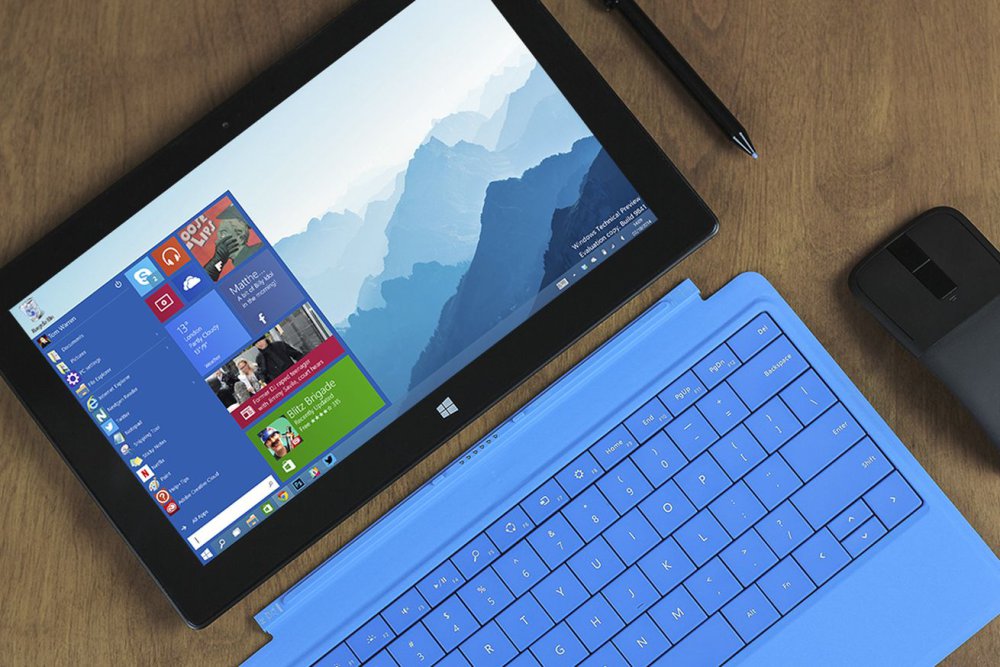-
Posts
7,282 -
Joined
-
Last visited
-
Days Won
2,416
Content Type
Forums
Blogs
Events
Resources
Downloads
Gallery
Store
Everything posted by allheart55 Cindy E
-
View full resource
-
allheart55 (Cindy E) submitted a new resource: [plain]Reset Your Windows 10 System[/plain] - [plain]data, files, recover,[/plain] Read more about this resource...
-
-
Like you said, Tony, although you can't actually reset Edge the same way that you do IE, you can still delete Edge Browsing History, Cookies, Data, Cache.
- 2 replies
-
- browsing history
- cortana
-
(and 2 more)
Tagged with:
-
When Microsoft’s Edge browser arrived this summer alongside Windows 10, it was seen as a major step forward, incorporating new features like Cortana Assist alongside tricks that had become popular elsewhere, like Reading List and the new InPrivate browsing mode. But now, new research suggests that InPrivate may not be as private as it seems. According to an investigation by researcher Ashish Singh, websites visited from InPrivate can be easily recovered from a user’s hard drive by examining the WebCache file. Visited sites are stored in the same "Container_n" table that stores tab history from conventional browsing, the investigation found. "We are committed to resolving this as quickly as possible." By examining that table, an attacker would be able to reconstruct a user’s entire browsing history, whether in Private Mode or not. "The not-so-private browsing featured by Edge makes its very purpose seem to fail," Singh wrote in Forensic Focus. Exploring the WebCache file on a Windows 10 computer, The Verge was able to partially confirm Singh’s results, recovering evidence of a site visited in private mode after the session had been closed. We were not able to locate the Container_n table or recover a complete web history from the Private Session, although it’s likely a trained professional would have more success. Edge isn’t the first browser to run into this problem. In 2010, Stanford researchers found that private browsing modes in Firefox, Chrome, Safari and Internet Explorer were vulnerable to local attackers through a number of attacks. According to digital forensics specialist Lesley Carhart, it’s a common problem, and private modes are rarely built to protect against investigations of the user’s hard drive. "Private browsing has always left easily retrievable artifacts on disk and in memory," Carhart said. "It’s always been a privacy feature, not a security feature." Still, those attacks typically focus on more obscure traces, like site permissions or data collected for the autocompletion of partial URLs. Maintaining the history in WebCache would make that investigation unusually straightforward. Reached for comment by The Verge, Microsoft confirmed it was investigating Singh’s findings. "We recently became aware of a report that claims InPrivate tabs are not working as designed," a Microsoft spokesperson said, "and we are committed to resolving this as quickly as possible." Source: theverge
- 2 replies
-
- browsing history
- cortana
-
(and 2 more)
Tagged with:
-
-
It sounds almost like what I went through the other day. I dropped my phone in between the front seats of the car during the big snowstorm. In attempting to retrieve it, I ended up pushing it so far back, in between the seat and the center console that I couldn't reach it at all. My granddaughter, with her tiny little four year old hands, was able to finally get it for me the next day. (Only after my husband shoveled my car out of 28" of snow.)
- 4 replies
-
- 1
-

-
- 88%
- millennials
-
(and 1 more)
Tagged with:
-

Windows Phone is dead
allheart55 Cindy E replied to allheart55 Cindy E's topic in Tech Help and Discussions
I like the Windows phone OS but the Lumia phones that I have had are very cheaply made. -
My biggest pet peeve is when you are trying to have a conversation and the kids and the grandkids barely look up from their phones.
- 4 replies
-
- 88%
- millennials
-
(and 1 more)
Tagged with:
-

Windows Phone is dead
allheart55 Cindy E replied to allheart55 Cindy E's topic in Tech Help and Discussions
I think that you're right. All my Windows phones were Lumia. The price is right but the quality is lacking. -

Dell D630 Vista Wireless driver not working
allheart55 Cindy E replied to mikehende's topic in Tech Help and Discussions
I'm not surprised at all. Dell has the habit of throwing in other hardware whenever they feel like it. -
When you watch TV, is your phone always within reach? More importantly, are you just listening to the TV while you fiddle around on your phone, tablet, laptop, smartwatch, web-connected crockpot? If so, then you’re like the 88% of millennials who are regularly using “second screens” while watching video. This according to research from trade group the Consumer Technology Association (formerly the Consumer Electronics Association), which found that 50% of all Americans with online access are turning to their secondary screens at some point while they watch TV and other video content. The most popular second screen use is to get more information about the show or movie currently being watched. This is also known as “look up the really attractive actor/actress on IMDB to see what else they’ve been in.” Another popular behavior that should be of concern to advertisers is the use of second screens to avoid watching commercials. Some 48% of survey respondents say they’ve picked up their phone or other device so they would have something to do during the ad breaks. As you’d probably expect, a lot of people (43%) are simultaneously watching TV or streaming video and going on social media. This is why you increasingly see TV programming, especially reality shows and live competitions, trying to encourage viewers to use show-related hashtags or engage in discussions about a topic on Facebook. They know you’re already on Twitter, Instagram, and Facebook while you’re watching, so they hope they can convince you to do some free promotion for them. And it’s the millennials (people currently between the ages 18 and 34) that these social media engagement efforts are hoping to cash in on, since 71% of them are using social media while also watching video content. These younger adults are also much more likely to use their second screens to ignore ads (70%, compared to 38% for consumers 35 and older), meaning social media is the primary way that advertisers can reach this demographic. There also appears to be a gradual shift away from televisions for some video content. When it comes to streaming video, a narrow majority (57%) of consumers currently prefer using some sort of non-TV device. That may be because a lot of viewers haven’t yet upgraded to web-connected TVs; some that have may have found that the built-in apps for streaming services are lacking compared to the apps built for phones and tablets. As TVs improve in their connectivity and picture quality — 4K TV is becoming increasingly popular and affordable — they may become the preferred way to watch streaming content. One thing that phones and tablets can’t provide that TVs can is screen size. Some 80% of survey respondents said the size of their TV screen was the most important factor, followed by picture quality at 62% and cost at only 29%. TVs will need to become high-performance streaming machines, as a growing number of consumers drops traditional pay-TV. The CTA survey found that 11% of respondents had dropped a TV subscription in the last year, with 27% of them saying they were switching to less expensive streaming options. Twenty-one percent of consumers now say they have gone without cable or satellite for at least a year. A third of those people explained that they simply weren’t getting enough content to justify the monthly expense. Source: consumerist
- 4 replies
-
- 88%
- millennials
-
(and 1 more)
Tagged with:
-
A burger and some chili or a baked potato seems like a great meal idea in this miserably snowy winter weather so many of us are having. Unfortunately, reports are saying that if you bought that tasty treat from Wendy’s with a credit or debit card recently, it may come with an unwanted side of fraud. The news comes from security expert Brian Krebs, who in recent years first broke the news of the Target and Home Depot breaches, among dozens of other smaller ones. Krebs reports that his sources inside the banking industry have seen a new pattern emerging in recently defrauded credit and debit cards. The similarity? All of them were recently used to buy something at a Wendy’s. Initial reports all seemed to come from the midwest, but also now seem to have spread to the East coast. A spokesperson for Wendy’s confirmed to Krebs that the restaurant chain is taking the reports seriously and looking for a leak. “Reports indicate that fraudulent charges may have occurred elsewhere after the cards were legitimately used at some of our restaurants,” the representative told Krebs. “We’ve hired a cybersecurity firm and launched a comprehensive and active investigation that’s underway to try to determine the facts.” However, the rep was unable to make any comment on whether the breach was still ongoing, when it started, how long it lasted, how many stores are involved, or how many customers were affected. “We began investigating immediately, and the period of time we’re looking at the incidents is late last year,” he told Krebs. “We know it’s [affecting] some restaurants but it’s not appropriate just yet to speculate on anything in terms of scope.” Source: consumerist
-
Windows Phone started off life as a promising alternative to Android and iOS five years ago. Microsoft positioned its range of Windows Phone 7 handsets as the true third mobile ecosystem, but it's time to admit it has failed. If a lack of devices from phone makers and even Microsoft itself wasn't enough evidence, the final nail in the coffin hit today. Microsoft only sold 4.5 million Lumia devices in the recent quarter, compared to 10.5 million at the same time last year. That's a massive 57 percent drop. Even a 57 percent increase wouldn't be enough to save Windows Phone right now. Microsoft and Nokia have sold a total of 110 million Windows Phones compared to 4.5 billion iOS and Android phones in the same period. IDC recently reported that 400 million phones were sold in the recent quarter, meaning just 1.1 percent of them were Lumia Windows Phones. Microsoft does not have any compelling Lumia handsets, and the Lumia 950 and Lumia 950 XL were both disappointing flagship devices with unfinished Windows 10 Mobile software. With Lumia sales on the decline and Microsoft's plan to not produce a large amount of handsets, it's clear we're witnessing the end of Windows Phone. Rumors suggest Microsoft is developing a Surface Phone, but it has to make it to the market first. Windows Phone has long been in decline and its app situation is only getting worse. With a lack of hardware, lack of sales, and less than 2 percent market share, it's time to call it: Windows Phone is dead. Real Windows on phones might become a thing with Continuum eventually, but Windows Phone as we know it is done. It won't stop Microsoft producing a few handsets every year as a vanity project, but for everyone else it's the end of the line. Farewell, Windows Phone. Source: theverge
-
-

Dell D630 Vista Wireless driver not working
allheart55 Cindy E replied to mikehende's topic in Tech Help and Discussions
On the Dell drivers support page, did you use the drop down menu to select Vista 32 bit, Mike? -

Check for updates not working
allheart55 Cindy E replied to mikehende's topic in Tech Help and Discussions
Ahhh, you never told us that the HDD was formatted as GPT. This I didn't know.... -

Check for updates not working
allheart55 Cindy E replied to mikehende's topic in Tech Help and Discussions
Thanks, Mike. -

Dell D630 Vista Wireless driver not working
allheart55 Cindy E replied to mikehende's topic in Tech Help and Discussions
Dell has the wireless driver for Vista 32 bit, is that the one that you downloaded? Did you use the drop down menu to select Vista 32 bit? If it is and it's not working, then the Vendor and Hardware ID is needed for a different driver. -

Check for updates not working
allheart55 Cindy E replied to mikehende's topic in Tech Help and Discussions
It certainly sounds like it could be a bad hard drive to me. -

Check for updates not working
allheart55 Cindy E replied to mikehende's topic in Tech Help and Discussions
Let us know if you change your mind. There are still other things that can be done. -

Check for updates not working
allheart55 Cindy E replied to mikehende's topic in Tech Help and Discussions
This is going to sound stupid but have you tried restarting the computer, Mike? Sometimes, it something that simple that we overlook. -

Check for updates not working
allheart55 Cindy E replied to mikehende's topic in Tech Help and Discussions
What says, "file not found", Mike? Which fix are you trying? -

Check for updates not working
allheart55 Cindy E replied to mikehende's topic in Tech Help and Discussions
There's actually a Microsoft Fix It for this error as well. Try this....https://support.microsoft.com/en-us/kb/2730071







